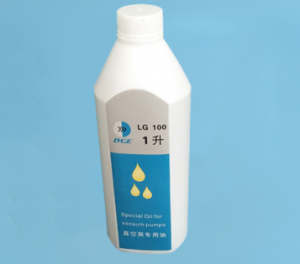Oil-sealed vacuum pumps are widely used across industries for their compact size, high pumping speed, and excellent ultimate vacuum levels. However, unlike dry pumps, they rely heavily on vacuum pump oil for sealing, lubrication, and cooling. Once the oil becomes contaminated, it can negatively affect performance, shorten equipment lifespan, and increase maintenance costs. That’s why understanding the causes of vacuum pump oil contamination—and how to prevent it—is essential for any user.
Is Vacuum Pump Oil Contamination Common? Warning Signs to Watch For
Contamination of vacuum pump oil is more common than many users realize. Early signs include cloudiness, unusual color, foaming, emulsification, or unpleasant odor. You may also notice decreased pumping speed or oil mist from the exhaust. While these issues may start small, ignoring them can lead to major operational failures and higher costs down the line.
Contaminants in Inlet Air: A Primary Cause of Oil Contamination
During vacuum operation, dust, moisture, and process gases from the environment can be sucked in through the intake port. These impurities mix with the oil and lead to emulsification, chemical degradation, and reduced oil performance. Environments with high humidity, fine particles, or chemical vapors accelerate this process.
Solution: Installing a suitable inlet filter is the most effective way to prevent contaminants from entering the pump and protect the oil from early degradation.
Poor Maintenance Practices Can Also Cause Oil Contamination
Improper maintenance routines are another major contributor to oil contamination. Common mistakes include:
- Failing to completely remove cleaning agents before refilling with new oil
- Restarting pumps after long idle periods without cleaning internal rust
- Leaving behind residue or degraded oil during maintenance
These issues introduce unwanted substances into the new oil and reduce its effectiveness from the start.
Tip: Always ensure the pump is thoroughly cleaned, drained, and dried before adding new oil.
Mixing Oil Brands May Lead to Chemical Incompatibility
Using different brands or types of vacuum pump oil together is risky. Each brand uses unique additive packages, which can react unpredictably when mixed. This may cause gelling, sedimentation, or chemical breakdown, all of which contaminate the oil and damage the system.
Tip: Stick to the same oil brand and type whenever possible. If switching brands, fully flush out the old oil before refilling.
How to Prevent Vacuum Pump Oil Contamination: Practical Tips
To ensure optimal pump performance and extend oil service life, follow these best practices:
- Use the right vacuum pump oil: Choose high-quality oil that matches your pump's requirements and resists emulsification.
- Install efficient inlet filters: These filters block dust, moisture, and particles from entering the pump chamber.
- Replace oil regularly: Establish a maintenance schedule based on your process conditions.
- Maintain clean operating conditions: Clean the pump and oil reservoir thoroughly during each oil change.
- Keep usage records: Logging oil changes and issues can help track patterns and avoid problems.
If you’re unsure which inlet filter suits your vacuum pump system, our engineering team can provide expert advice and customized solutions. Feel free to contact us—we’re here to help you protect your equipment and reduce operating costs.
Post time: Jun-24-2025







